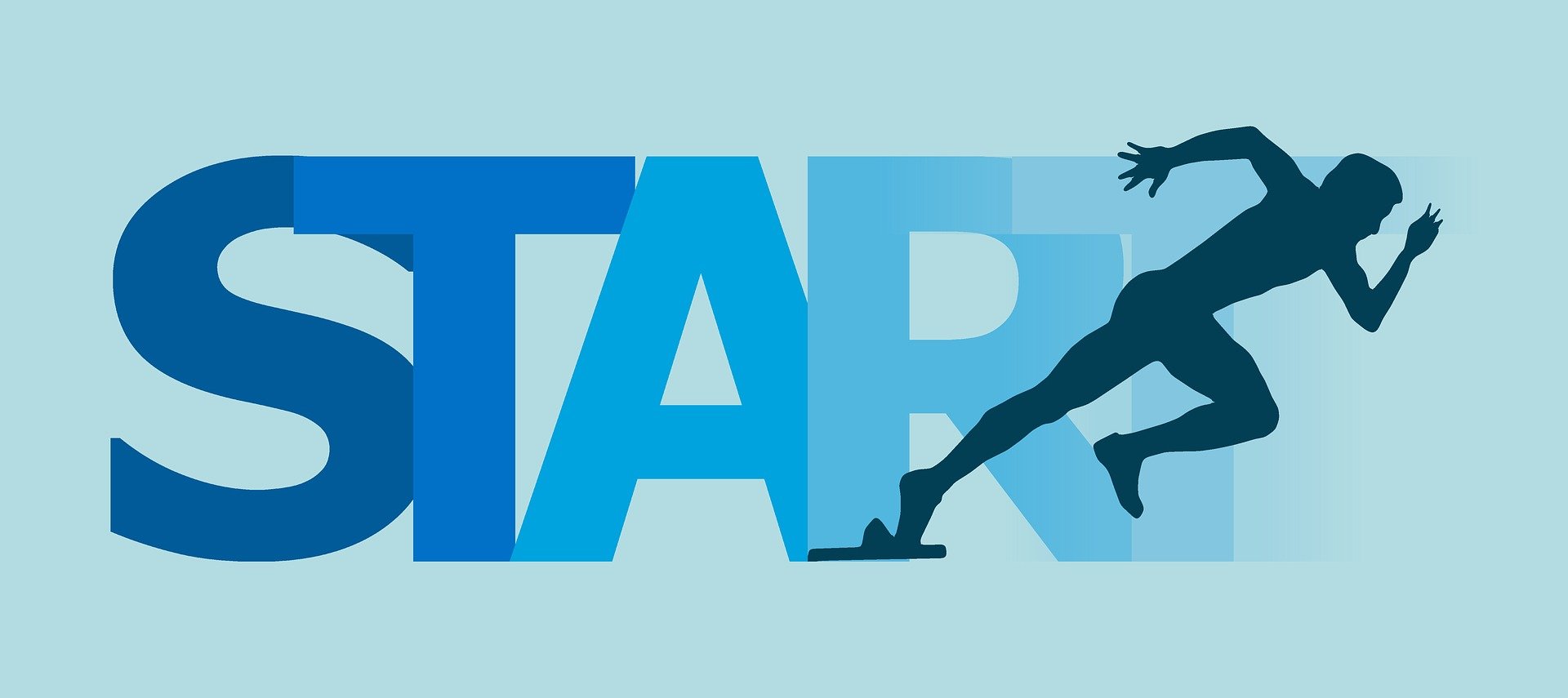Do you lose your audience once you speak up? Or do you carry them along so they keep a high attention level throughout your presentation? A catchy structure is one of the important aspects you should consider. A strong introduction, an interesting main part and a meaningful conclusion are equally important. Guide your audience by transitions such as emphasized pauses and changing your position on stage. Also add interactions using polls, quizzes, and short discussions. Sometimes surprising twists and turns help.
First Sentence is yours!
When does your presentation start? Most people would say it is your first sound on stage. Others point to the time of preparation. Provide a positive first impression once the moderator calls your name and you get up from your seat. If you are crouched, you will leave a poor impression compared to a speaker who is excited about her presentation, flirts with the audience, and smiles at the audience as she dynamically walks to the stage.
Some excuse themselves with an opening like “Unfortunately, I did not have much time to prepare.” This seems disrespectful to the audience because the speaker obviously prioritizes other things or seems disoriented. Speakers often start by thanking 27 friends, colleagues, and even their grandmother. Once they switch into the main topic, half of the audience is already engaged in other activities.
There is another way: “The first sentence is yours!” You decide for yourself how to start your speech. Apart from rare formal occasions such as welcoming the President of the Federal Republic of Germany or a cardinal, it is up to you how you start. Do not let anyone else tell you what to do!

At first, your audience is curious about your topic. They will listen very attentively. But many speakers repeat what the moderator said and then display a PowerPoint slide with the following overview: “I will start with the introduction, then I will present our hypothesis, then I will present the working methods. After that, I present the results of my study, before I draw the conclusion, show you the thank you slide with a dog on a field of flowers. On the last slide, you can find all references and our sponsors. So let me start now…” This introduction may be exaggerated. In fact, I see this in many presentations to this day. It does not knock anyone’s socks off. In the vast majority of cases the structure of the presentation is almost identical, especially within the scientific community.
How do you engage your audience with an exciting presentation? You can express surprising things, for example as a contrast: “Less is more: The shorter our preparation time, the more effective we work!” Questions addressed directly to the audience are almost a classic approach, referring to the event or to your presentation topic: “Who among you would like to travel to Mars by 2040?” or “Who predominantly reads e-books today?” By doing so, you engage your audience to take action. Now you could involve their reaction into your presentation or comparing it with results from other polls, taking a stand on current trends. Rhetorical questions prompt your audience to think or address emotions, such as their fears or desires. Bring a positive turn to the end of the presentation at the latest.
Further options to introduce your topic in a scientific setting are provided here: https://redelandschaften.de/en/a-stimulating-discussion/
Structure complex Information in the Main Section
When preparing your presentation, focus on compact information that you can communicate precisely. It is all about the essence of your topic. Once you have gathered your content, you can structure it according to the following patterns:
- Chronological. This is ideal for presentations in which you depict a historical development over time. You can also use it for individual development stages of a product. As a scientist, I was able to map chronosequences of paleosols in a way that soil formation processes reflected a certain degree of development, depending on the age of the soil.
- Pros & Cons. You can examine controversial topics from different perspectives. Which groups are in your audience? Can you exemplify their points of view? One option is to conduct audience surveys, which you can discuss based on the results. Be sure to balance content and time so that no faction feels disadvantaged, and keep the resulting discussions short and compact.
- “Narrative Spectrum”. My personal favorite is a simplified storytelling structure, the “Narrative Spectrum” after Randy Olson: Put the most important results of your study into context with an “And”. Change the narrative direction including “But”, thereby creating tension in the content. “Therefore” contains a consequence, depicting a new state of knowledge. This way, you encourage your audience to think along without confusing them. You can also apply this “And – But – Therefore” structure multiple times for individual results of your study.
- Storytelling. The best known approach is undoubtedly the hero’s journey according to Joseph Campbell. It contains 17 or, depending on the interpretation, 12 stations and is probably too extensive for many short presentations. In short, a hero tackles an existing problem. He must overcome various challenges to solve it. At the climax of the story, the further direction of action is decided until he finally solves the problem. In the conclusion, you highlight the key message of your story. The hero has changed his character during the journey.
- Fiction and Vision. Fictions are suitable when you transfer technical information into reality. The content becomes tangible for your audience. An example is how chemical elements talk to each other until a reaction leads to a changed state. You can also provide a future perspective in the present. Remember to explain to the audience the difference between fiction and reality so that there is no confusion or irritation.

Find out how you can also structure your presentation in this blog: https://redelandschaften.de/en/science-story-highlights/
Last Sentence is yours: How you are remembered
You are in the audience listening to a speaker. He ends his talk by saying “I hope you enjoyed it.” Are you now enthusiastic and knocked off your socks? I am sure the opposite is true.
Remember: Your audience will remember the very end of your presentation. It is the last impression that will stay. That is why the end of a speech is especially important. Avoid meaningless phrases, the usual thank-you and literature slides, or apologies.
There are a number of great ways to end your presentation. Highlight your most important statement in the last sentence: “ResearchGate and LinkedIn are the most important networks regarding our online visibility.” Or motivate your audience to take an immediate action: “You can get free sample copies at our info booth.”
You can also repeat your key message and emphasize it prominently, or you can refer to what you said at the beginning. If you started by sharing a personal experience, you can now emphasize the effect on the present or point out concrete perspectives for the future.
Your audience also perceives how you leave the stage. Do not do as one of my colleagues did, who gave a sigh of relief at the end of the presentation at a congress and wiped the sweat from his forehead as he walked away. I still remember that scene 12 years later – long after I have forgotten the content. Your presentation only ends once you are no longer on stage and you are seated in the audience again.
My motto for every presentation: “The last sentence is yours!” Used skillfully, your audience will follow you to the end of your presentation. Read here how you can lead into the following discussion: https://redelandschaften.de/en/a-stimulating-discussion/
This post is also available in: German



Leave a Reply
Want to join the discussion?Feel free to contribute!